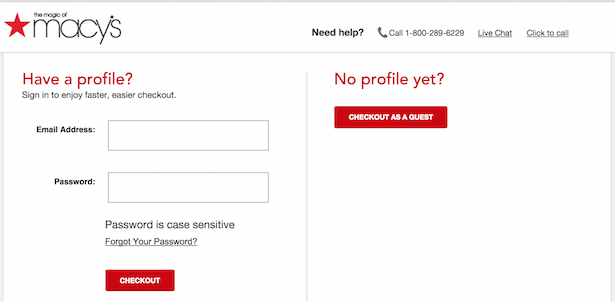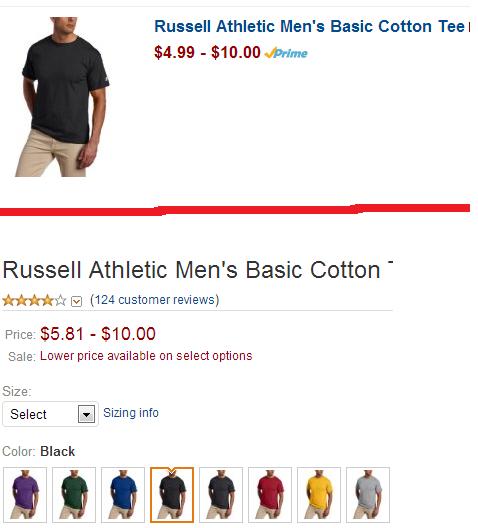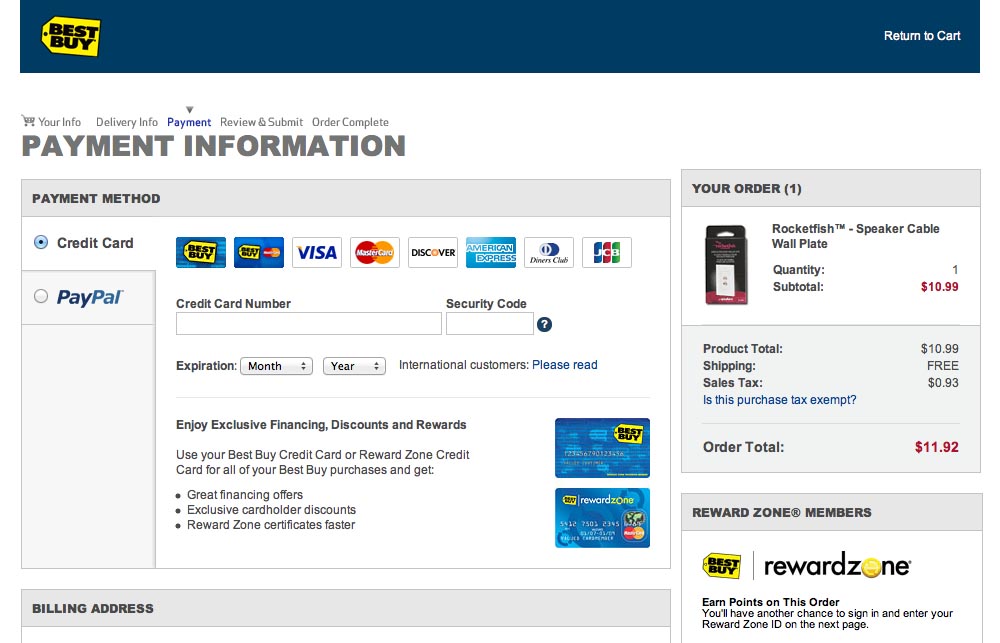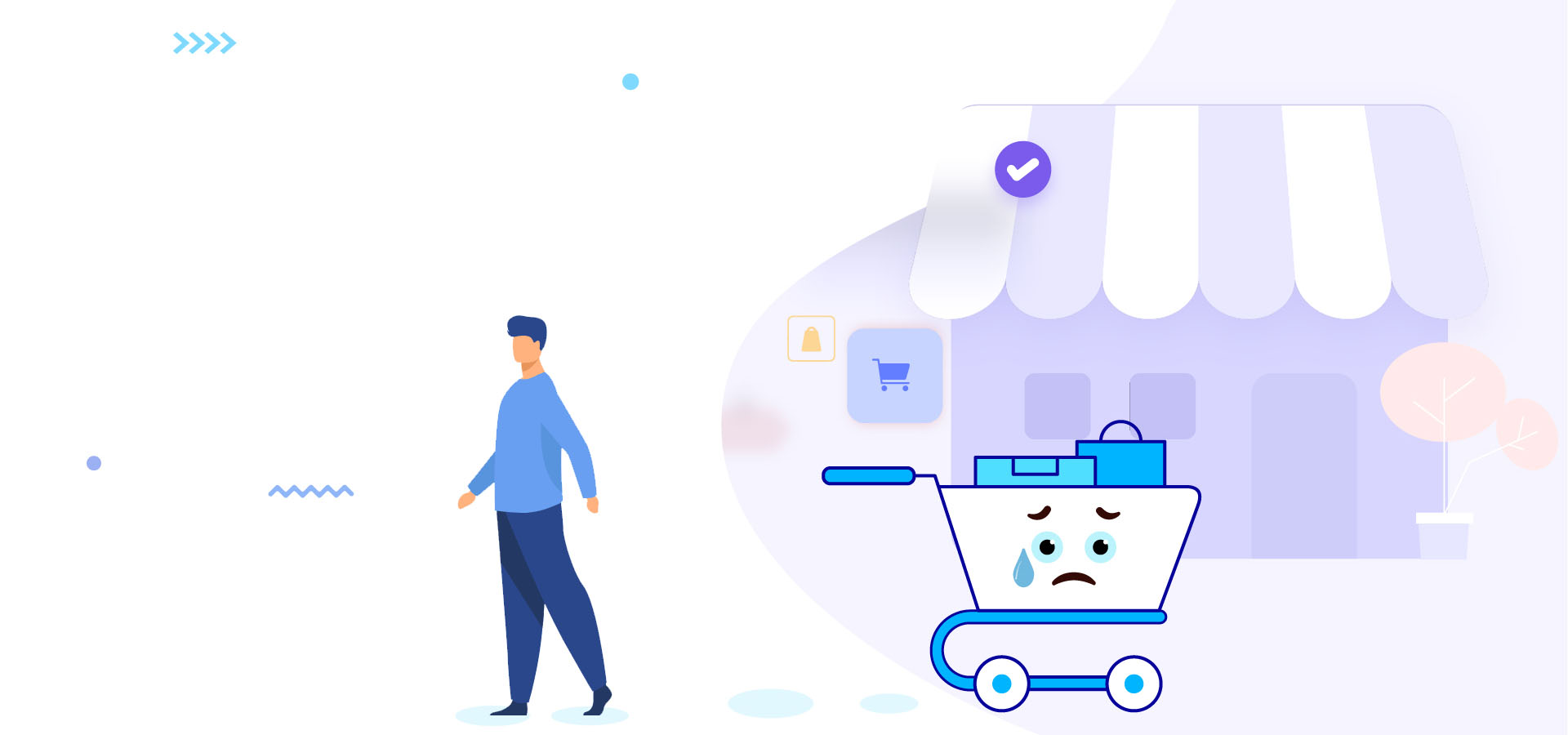6 Proven Ways to Reduce Shopping Cart Abandonment
You are running an online store with a promising inventory and a steady amount of traffic. That’s great news! But have you covered all your bases?
Despite your best-laid plans, users visit the store, add products to their shopping carts and then abandon it. This happens all the time. 69.89% of times to be exact! This means, your store’s conversion rate is only one-third of what it should be.
You are not alone in this. Many e-commerce store owners worldwide face this problem quite often. Thankfully, there are ways to overcome this. Let’s take a look at them.
1. Simplify the Checkout Process
You’d be surprised to know that 28% of online shoppers abandon their shopping carts due to a lengthy and complicated checkout process.
The checkout process can either be of a single page or contain multiple pages depending on the requirements of your business and your business type. While a single page may quicken the checkout process, packing several information fields in one page may make it look cluttered. On the other hand, a multiple-page checkout can help you track exactly where in the checkout process a user is dropping out from. Read up on more pros and cons of single-page vs. multiple-page checkout before making a decision.
The following image gives you a quick overview.


2. Send Abandoned Cart Emails
This is a remarkably effective strategy for sales recovery. Why? A large percentage of cart abandonment happens because the website crashed or the process took too long and the page timed out. This means abandoning the cart wasn’t the intention at all for many of your users. This is where the cart abandonment Email comes in handy.
In fact, nearly half of these Emails are opened and about a third of these opens lead to online purchase as well!
Begin the Email with a reminder of what your customer has abandoned. Accompanying it with a flashy image is optional. Next, you can tell them that you have reserved the items for them to purchase and apologize for the glitch before. Lastly, if you are up for it, there’s nothing like making an offer they can’t refuse. A discount or free shipping can do the trick. Also, creating an urgency (for example, the item is running out of stock) can also expedite sales.
Here’s an example.


(Image Source: https://amasty.com/abandoned-cart-email-for-magento-2.html)
3. Offer a Guest Checkout Option
No doubt, user registration before checkout is an excellent source of customer data, but it can also be a huge deterrent to completing a purchase. Forcing a customer to sign up to make a purchase makes the checkout process too lengthy. As a result, customers quit unless the product is too irresistible or too rare.
It’s true that you will have to sacrifice customer data if you offer a guest checkout option. But this will also make the checkout way easier for them. And this is what they want. Remember, the easier you make it for customers to buy a product, the more sales you will get.
Macy’s guest checkout option is an example.


(Image Source: https://www.clickz.com/checkout-best-practice-101-guest-checkout/98289/)
4. Be Clear About Additional Costs
Did you know that 22% of users abandon their carts because they weren’t made aware of the additional charges from the beginning? Customers get put off by the increase in cost due to the addition of shipping and other charges. Truth is, shoppers don’t like surprises. Therefore, it’s wise to make these costs clear before they add the items to their carts.
How do you do this with varying shipping charges? The simplest way would be to show the price range the product’s cost would vary between. You can also consider installing a calculator plugin that would calculate the estimated shipping cost of the product for every user.
Here’s an example that shows the varying price range of a product.


(Image Source: https://webapps.stackexchange.com/questions/37053/when-amazon-gives-me-an-items-price-as-a-range-like-5-10-how-do-i-get-the-low)
5. Offer Various Payment Options
Online shoppers prefer to be presented with a variety of payment options. The standard Visa, Mastercard, Amex, and PayPal are customary. However, every customer is different. So, it’s also important to understand the buyer persona of your customers to include payment options that are more suitable for them.
Speaking of payments, some users abandon their carts because they are concerned about payment security. Why? This may be caused due to an outdated layout of the store, lack of SSL certification, flaws in design etc. To eliminate this problem, you would need to build trust with your customers, get some customer testimonials to prove it, provide complete information about your store and ensure that you can be reached easily.


(Image Source: https://baymard.com/blog/payment-method-selection)
6. Implement Exit Intent Pop-Up
Yes, it can be a little annoying to see a sudden pop-up when someone has decided to leave the site. But here’s the thing. These pop-ups work.
When your users are on their way out of your store, they are quite clear about their intent and their attention is already being focused elsewhere. In this situation, you’ve got only two options – sit quietly and watch them go or, give it one last shot. You’ve got nothing to lose with the second option.
However, a generic pop-up won’t do you any good. Online shoppers are smart enough to see through it. So, your pop-ups need to be optimized if you want to convince them. For example, the copy should be enticing. You can offer a discount of some sort to stop them from leaving. The design should match the theme of your store.
You can also add a negative call-to-action. This is where a negative effect is implied if a customer does not convert. Take a look at the example below.


(Image Source: https://www.crazyegg.com/blog/optimize-exit-intent-popups/)
How We Helped a Client Reduce Cart Abandonment
Of the things we helped Chromadex achieve with the Shopify store of its product, Tru Niagen, reducing shopping cart abandonment was one. Tru Niagen is a health supplement that is sold through a dedicated online store on Shopify (www.truniagen.com). This store had 5000+ visitors a day. But none of these were converting to customers. Bounce rate was high on both cart and checkout pages.
So, we decided to focus on the following three points:
- Pain areas of the website
- Pages where customers were quitting from
- Data that bounced customers leave behind
To increase sales, we decided to conduct Email drip campaigns. Here’s what we did:
- We added the functionality to store the Emails of bounced customers in the back-end system
- We set up Email platforms like Mailchimp.com, Klavio.com, constantcontact.com etc. and integrated triggers in them so that when a customer leaves the site, s/he receives an Email reminding him/her of the forgottem product in the cart. These Emails were automated and contained customers’ order-specific information.
- We enabled sales conversion tracking from the Emails to monitor this campaign’s performance


The outcome was excellent. Sales from bounced customers increased. These additional sales incurred zero cost since the Email platforms were free. Check out the complete portfolio here.
Conclusion
If you are facing shopping cart abandonment issues, these tips should do the trick. However, every business has a different requirement. It’s important to first understand why your customers are dropping out before implementing any strategy. A thorough analysis is always useful. It can help bring forward the leaky spots in your e-commerce store’s conversion strategy. If you need help with this, we’ve got you covered. Contact us to uncover surefire ways to reduce your shopping cart abandonment. When you are done reading this, we recommend you to head on over to the next step – how to increase your e-commerce store’s conversion.


